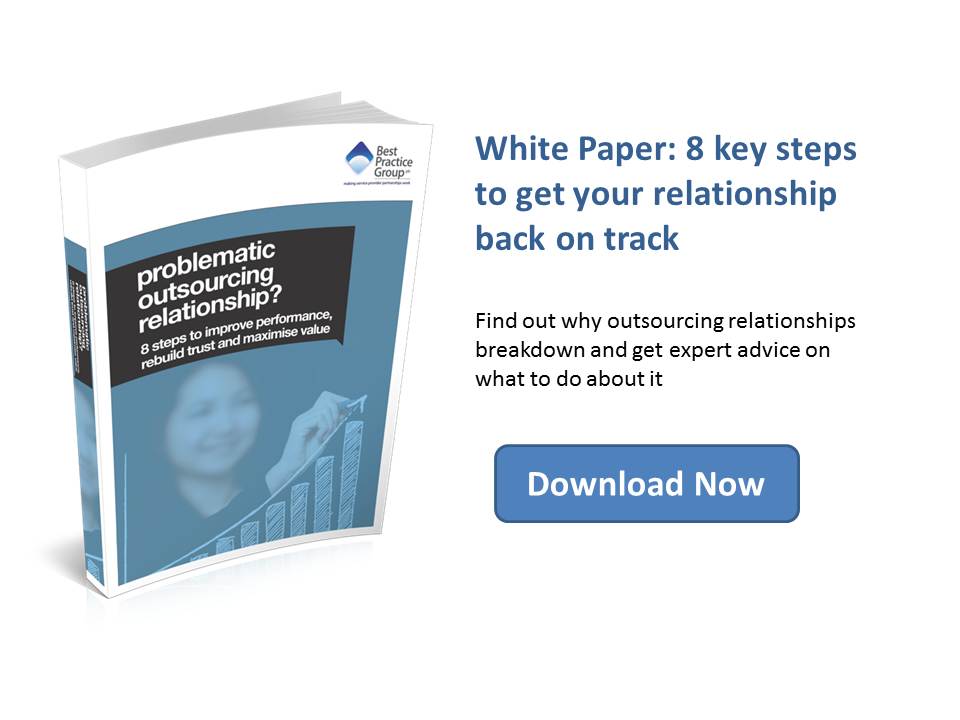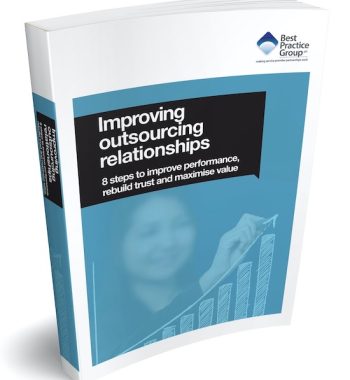 The pressure on procurement teams can be immense when considering project partners, and with vendor-side sales people pulling in one direction and often client-side policy pulling in another, deciding on how to pay for your project can be a challenge. But, despite the deadline-orientated ‘deals’ offered to induce clients to make snappier decisions or the weight of demands for rapid delivery being exerted from more senior internal echelons, what should never be underestimated is the vital importance of structuring the deal and project payment mechanisms correctly.
The pressure on procurement teams can be immense when considering project partners, and with vendor-side sales people pulling in one direction and often client-side policy pulling in another, deciding on how to pay for your project can be a challenge. But, despite the deadline-orientated ‘deals’ offered to induce clients to make snappier decisions or the weight of demands for rapid delivery being exerted from more senior internal echelons, what should never be underestimated is the vital importance of structuring the deal and project payment mechanisms correctly.
The three leading project payment mechanisms
There are fundamentally three project payment mechanisms – Fixed Fee, T&M and Capped Costs. There are also a myriad of creative forms of risk/reward arrangements: the vast majority of which have these three payment types as their foundation. Each has its own benefits and ideal opportunities to shine. But it’s how to know when to use each one that will differentiate your successfully completed project from another that’s plagued by delays, significant unexpected costs and a partner relationship meltdown.
1. Fixed fee
We recently wrote at length in an article titled ‘Paying for projects – The potential dangers of fixed fee project negotiations’ about the intricacies of this payment type, therefore, we will simply summarise its benefits and risks here in this article.
Fixed fee is undoubtedly perceived by many as being the pinnacle of project payment mechanisms. Maybe it’s because, once selected, it will often be the relative negotiation and analytical skills of the team that determine whether you get a bargain or not, or the certainty it gives all parties that the agreed figure is precisely what the job will cost (though this confidence may not always be justified as you’ll see in our Fixed Fee article). Of course, the reality of the fixed fee payment type is a little more complicated than this so there are some important questions to ask yourself at the outset:
- How well has your project been planned, prepared and articulated?
- Are all elements of the project known and quantifiable?
- Is there a clear timeline?
- Have you got complete buy-in from all stakeholders to the project?
- Do you have a clear and concise contract to work from?
- Have all potential risks been recognised, reviewed and mitigated?
- Is there a significant chance of material change to the project scope, timeline, quality criteria or resourcing?
The clearer the parameters of the project are, the more likely it is that fixed fee is a serious contender for your payment decision. The more potential for ambiguity or change there is, the less well it will work for you.
2. T&M (Time and Materials, or Time and Fees)
T&M is very straightforward and by far the easiest to administer for both parties. You simply pay the provider its agreed day rates multiplied by the number of days worked. It is an agreement to pay the vendor for the work they do rather than seeking to fix a fee at the outset. It is seen by many as the equivalent of giving the provider a ‘blank cheque’. Dangerous and unadvisable if there are inadequate controls, but, while there is no doubt that T&M traditionally favours vendors (as there is very little risk in it for them), there are certainly times when clients might be right to choose this payment mechanism.
In the right circumstances, the vendor’s confidence that they will be paid for doing the best job they can rather than for shoehorning requirements into a restrictive budget means that T&M can:
- encourage quality over penny-pinching
- ensure the best talent is allocated to a project
- offer a fair an amicable arrangement for both sides
- work well on fragmented or agile projects.
There is, however, a massive caveat to these points, which is that a T&M payment type should only ever be entered into if you have robust controls, checks and mechanisms in place around the project. Essentially, if you are going to give your vendor greater freedom with your budget, make sure that you have greater visibility of how it is being spent and what you are getting in return – keeping track of burn rates, quality control and progress to schedule. Monitoring deliverables against targets is important to make sure that costs do not get out of control and that T&M is driving the right behaviours.
A typical example of when T&M might be most appropriate would be when specialist expertise is required, and, to ensure that this expertise is available when it is needed, the project timeline payments may need to be made more flexible and retainers paid even before the project has been fully planned out.
3. Capped Cost
Imagine a Time and Materials arrangement, but with a maximum limit to the amount the client needs to pay. Should the project come in under this limit, or cap, then clients potentially will have paid less than if they had chosen a fixed fee mechanism, and if the project turns out to be more complex or costly than initially expected a client will still only have to pay the capped figure. It’s Time and Materials fairness combined with Fixed Fee certainty to offer what seems to be the best of both worlds for a buyer.
The capped cost payment type favours the buyer, the client, but there are advantages for the vendor too. Just like with Fixed Fee it offers the vendor an element of income certainty, it can appeal to their sense of fairness, or they can use it to show trust to win trust from clients.
It can also be used to help push a project forward more quickly than would otherwise have been possible. If speed is of the essence, once a ballpark-not-to-exceed figure has been established, a capped fee mechanism can be an effective interim tool to allow a project to proceed while due diligence is completed and a more certain final fixed fee figure for the project is calculated.
There are though risks to watch out for:
- A nervous (or unscrupulous) vendor may look to maximise its chances of being paid the full capped fee by throwing unnecessary resources at a project until the cap is reached.
- To mitigate their risk of under-pricing a project where the upper end of the fee-scale is fixed, this payment type can encourage exaggerated or inflated project estimates.
- Once a cap has been reached the vendor may feel less incentivised to use its best people and drive innovation and the project can suffer as a result.
- Behaviours in point c (above) can cause relationship issues between a vendor who feels underpaid and undervalued, and the client who sees quality drop on the project.
Project Payment Mechanisms: Some sensible conclusions
As mentioned, the points made here are merely foundational ideas for what can become a very complex topic and are provided to highlight some of the benefits and pitfalls to consider when selecting your project payment type. Whichever you choose, it would make sense to build in some form of milestone payment regime based on deliverables achieved rather than time spent and to hold back some of the monies until you are completely satisfied with the final results. Essentially, each project requires individual consideration. And the only way to encourage the right behaviours from all concerned is to find a fair and equitable solution, closely monitor progress, incentivise and keep the realistic motivations of all concerned at the fore when negotiating a payment mechanism for your project.


